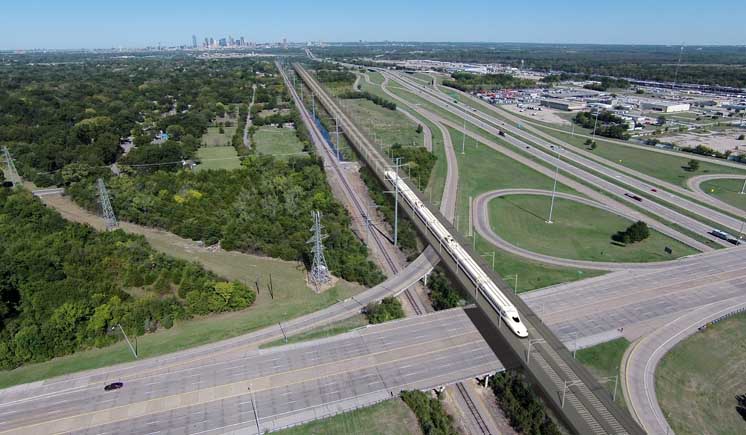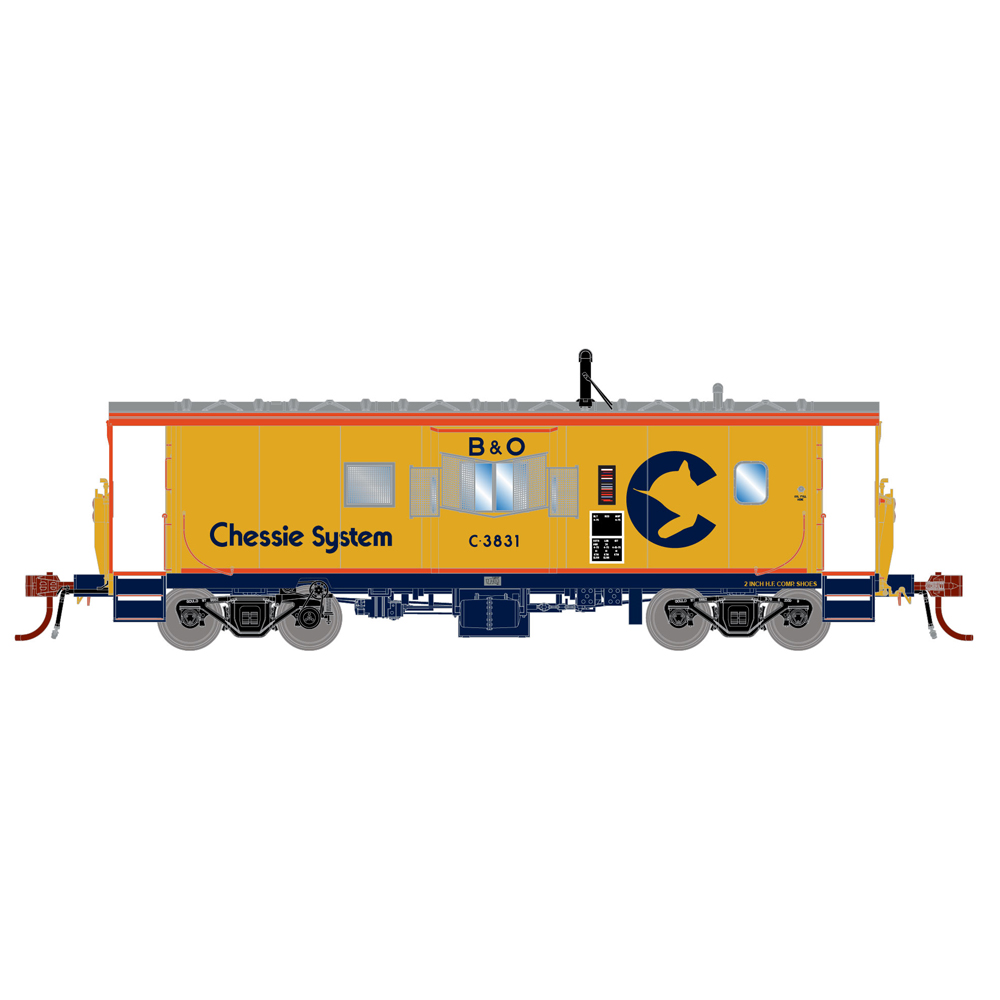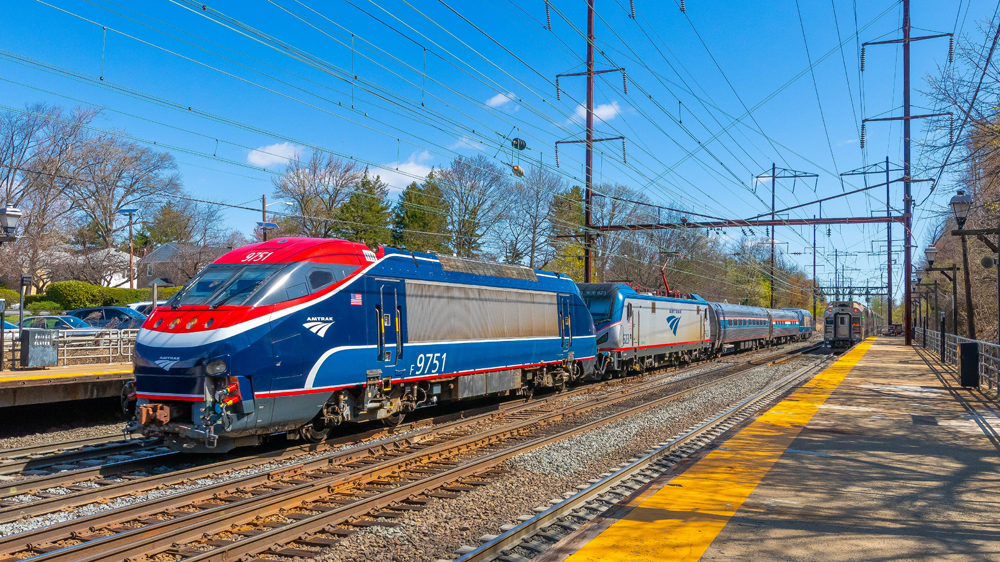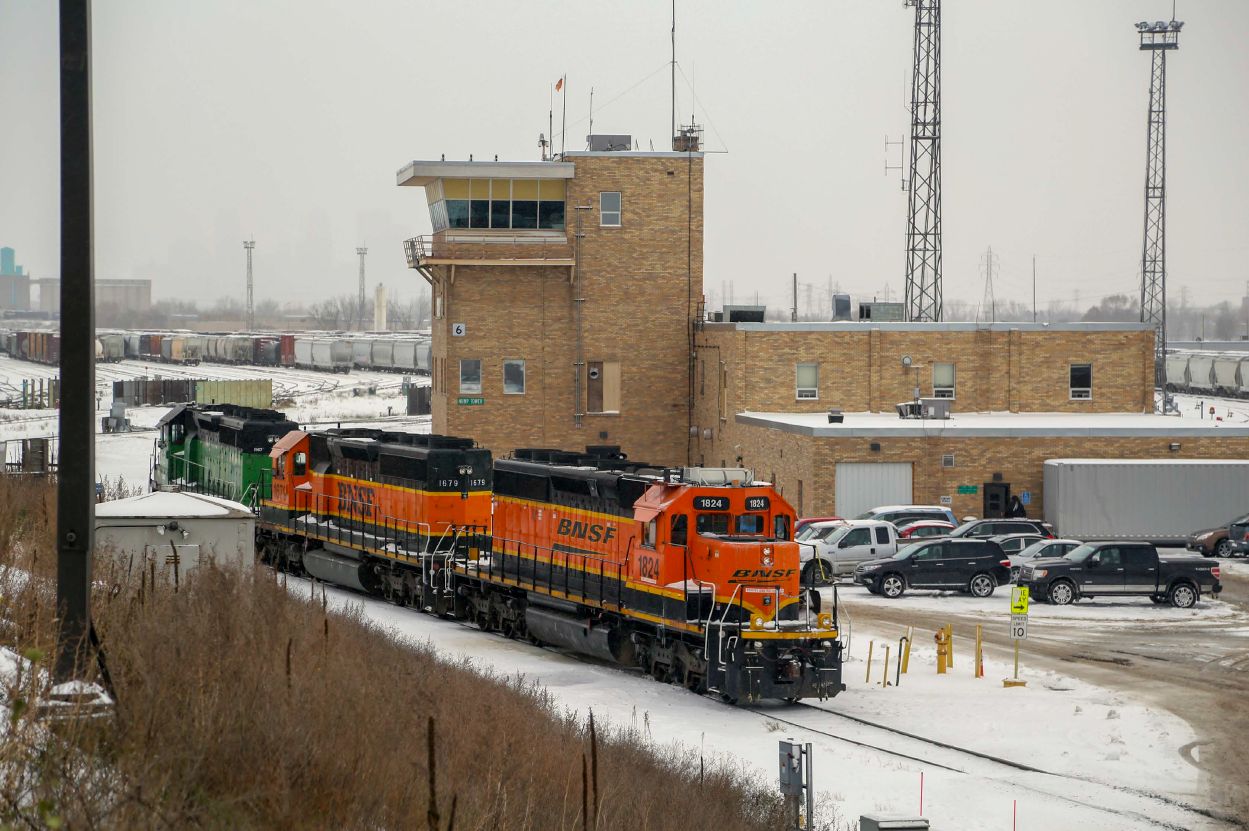Before World War II the New York Central set out to upgrade its fleet of conventional passenger trains. The task of accomplishing the bottom-to-top makeover was given to industrial designer Henry Dreyfuss and a team of engineers from Pullman, the railroad, and locomotive manufacturer Alco.
Dreyfuss didn’t hide the lines of a steam locomotive beneath a sheath of aluminum. Instead, he added a graceful wind-splitter to the nose, kept unsheathed all running gear (for practical as well as stylistic purposes), and even – for strictly cosmetic reasons – extended the length of the tender.
J3-class Hudsons nos. 5445 through 5454 received the Dreyfuss touch in 1938, J1e no. 5344 in 1939, and J3 Hudsons nos. 5426 and 5429 in 1941. The Central removed the streamlining in 1948, and none of these engines survived the railroad’s dieselization.
The Dreyfuss Hudsons pulled two tenders. The original 42-foot, 9-inch model was replaced in 1942 by 51-foot, 11-inch PT-class centipede tenders.
The Dreyfuss Hudson is the symbol of speed and style in transportation. The locomotive’s distinctive lines have been featured on record jackets, in Broadway plays, and on all sorts of advertising.
The model
The model of the Dreyfuss comes as close to being a piece of art as you can get. Even at a rest, the Dreyfuss seems to be ready to roll.
The smooth pilot is exquisite, and its unique wind-splitting ridge (shaded slightly silver versus the gray of the boiler) crosses the locomotive’s face before melding into the boiler top.
Since the prototype was streamlined, there isn’t a whole lot of mechanical detail to replicate on the flanks of the model, but what is appropriate is duplicated here. The handrails, which begin at the base of the pilot and extend along the boiler, are painted gray – adding a nice professional look to the engine.
With the engine sitting on my desk, I wasn’t too impressed with its silver drivers. But once it was on the track and running at speed, the shiny metal side rods and running gear – lit from beneath the running boards as on the prototype – contrasted wonderfully with the painted drivers. I guess that is what Dreyfuss and the gang at the Central intended when they came up with this paint job!
The streamlined tender models the prototype – even including the tender’s non-functional extended shroud and its nook at the end of the car. The coal bunker has hinged covers to partially enclose the cast-in coal load. The tender has a slight notch up top to give the cab roof clearance on tighter curves.
On the test track
The Hudson’s performance is terrific. In the conventional mode, with the ProtoSound 2.0 speed control turned on, low speed was an amazing 4.07 scale mph. On the high-end, speed averaged 88.2 scale mph. With a 25-car, mixed-vintage and manufacturer freight train in tow, the Dreyfuss clocked in at 61.2 scale mph.
Drawbar pull is impressive. The 12-pound, 15-ounce engine musters 2 pounds, 10 ounces of pull, which equals roughly 78 modern pieces of rolling stock on straight and level track.
The engine has two pickup rollers, both on the locomotive, spaced 3 inches apart. The locomotive performed as expected on MTH’s Z4000 transformer and traditional Lionel transformers. (All tests were in conventional mode; MTH’s Digital Command System controller was unavailable at the time of our testing.)
Running the Hudson with the MRC DualPower O-27 transformer, the ProtoSound 2.0 system didn’t seem to like the transformer’s “phase control sine wave” electrical pattern and began emitting a wild array of erratic sounds.
When checking our sample engine with a Lionel TrainMaster Command Control system and an IC Controls TPC 3000 in conventional mode, we encountered some spurious bell ringing at lower voltage levels.
But on another TMCC layout using a Lionel PowerMaster, the locomotive’s bell worked fine. Lastly, when using a Lionel CAB 1 controller, it was difficult if not impossible to get a light enough tap on the horn and bell buttons to activate some of the PS 2.0 features.
Transformer idiosyncrasies aside, the Premier line Dreyfuss Hudson is one of the most attractive models I’ve seen and its performance equals its beauty.














